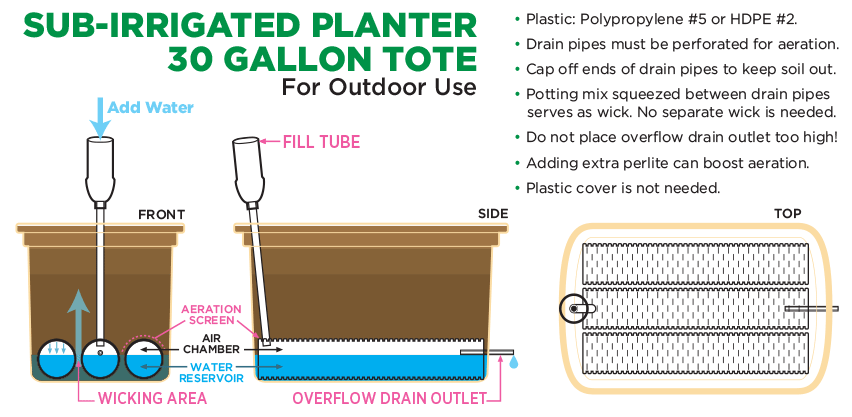How To Use Sub-Irrigated Planters In The Garden
Maintaining a healthy and thriving garden can be achieved with sub-irrigated planters, also known as self-watering planters. These planters offer several benefits to gardeners, such as providing a consistent water supply to plants, reducing the risk of over- or under-watering, and minimizing water usage by reducing evaporation. However, it's important to note that sub-irrigated planters may require more setup and maintenance compared to traditional pots or raised beds. Being aware of these factors will help you make informed decisions and take proper care of your plants.
One crucial factor to consider when using sub-irrigated planters is the type of soil to use. The soil should be well-draining to prevent waterlogging and root rot. A mixture of peat moss, vermiculite, and perlite is often recommended for optimal drainage and moisture retention. Additionally, it's essential to regularly check the water level in the reservoir and refill it as needed to ensure a continuous water supply for your plants. This maintenance task is significant for the success of sub-irrigated planters and should not be overlooked.
Besides choosing the right soil and regularly checking the water level, there are other essential factors to consider when using sub-irrigated planters. Proper sunlight exposure is crucial for the health and growth of your plants. Most plants require at least six hours of direct sunlight each day, so it's important to place your planters in a location that receives adequate sunlight. Additionally, it's crucial to monitor the temperature around your planters, as extreme heat or cold can negatively impact plant growth. Providing shade during hot summer months or protecting your planters from frost in colder climates can help.
A self-watering garden system is ideal for elderly, handicapped, or disabled people who have difficulty bending over. With a self-watering garden system, individuals with limited mobility can easily maintain their plants without the need for constant bending or reaching. This innovative system provides a consistent water supply to the plants, ensuring their health and growth while minimizing the physical strain on the user.
Sub-irrigation is a reliable method to keep your plants healthy. Always keep in mind the weather and the amount of water your plants need, and adjust the watering schedule accordingly. Additionally, the self-watering garden system can be customized to accommodate different types of plants, allowing users to create a diverse and thriving garden with minimal effort.
Sub-irrigated planters are easy-to-build systems that can be made from common materials such as buckets or containers. They work by using a reservoir of water at the bottom, which is then wicked up into the soil through a series of capillary actions. This ensures that the plants receive a steady supply of water, reducing the need for frequent watering and minimizing the risk of over- or under-watering. Overall, sub-irrigated planters are a cost-effective and efficient way to maintain a beautiful garden with less effort and resources.
Best Potting Mix For Container Gardens
Growing Your Own Vegetables In Containers
Grow Potatoes In Containers?
Growing tomatoes in Containers
What To Know About Container Gardening
Links:

No comments:
Post a Comment